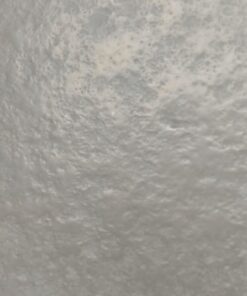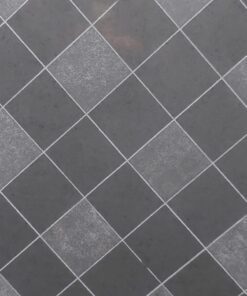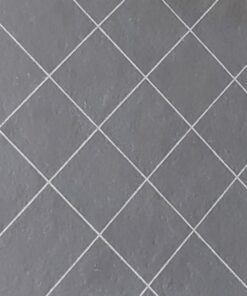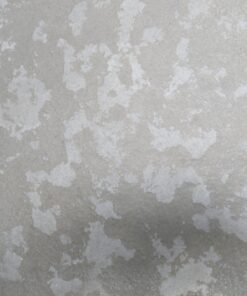Are you constructing a new house and unsure about your flooring options? Kota stone is a cost-effective, very durable, and aesthetically pleasing flooring option that is both natural and sustainable. For many years, marble and granite were regarded to be the superior alternatives, while Kota was consigned to the position of “poor cousin.” However, recently, this adaptable stone has come into its own and become very popular.
What is Kota Stone?
The Kota area of Rajasthan is where the Kota stone was first discovered, thus its name. This sedimentary rock is hard, compact, and uniform in cross-section because it is made of fine-grained limestone. Kota has a rough, leathery feel in its natural condition, which looks stunning when sealed. However, the majority of individuals like giving one side a mirror finish.
With the exception of the distinctive specks of granite, Kota stone is available in a greenish, greyish shade that resembles slate or grey granite. Although less common, colors of brown and greenish blue are also available.
What are the available colors or types of Kota stones?
The most widely used colors are natural blue & light brown. The other available colors are
- Honey
- Beige
- Bluish-black
- Pink
- Grey
- Green, etc.
What are the different finishes you can find in Kota stones?
The stones are available having different textures & surface finishes. They are,
Hand-cut: Stone edges are finished by using hand tools.
Machine cut: All four edges of the Kota stone are cut by using machines.
Polished: The top surface is polished to have a uniform surface.
Leather finished: The surface is treated to have a leather-like appearance.
Mirror finished: The top surface of the Kota stone is fine polished & waxed to achieve a mirror finish.
Honed finish: It means the edges & corners of the Kota stone are prepared to have a sharp & perfect finish.
Calibrated: The Kota stones are made to have a corrugated-like appearance by grooving with machines.
Where Can You Use Kota Stone?
Kota stone is a preferred alternative for both interior and exterior usage in homes and workplaces. It is used in countertops, wall cladding, flooring, and countertops.
Kota stone is utilized for the backsplash as well as the countertop in this stunning kitchen. Because the sizes of the stones are smaller, it takes a great deal of skill to place the stones with smooth seams.
Keep in mind that Kota is often not recommended for use in Indian kitchens since it is prone to surface discoloration and pitting.
What is Kota stone flooring?
India’s Rajasthan state includes the district of Kota. These stones go by the name Kota since they are mostly mined there. Natural stone from Kota is mostly composed of fine-grained limestones. They fall under the category of sedimentary rocks since they include the chemical elements calcium carbonate, silica, and magnesium oxide.
The Kota stones are carved into slabs that are around one to two inches thick. The stones are moved from the quarries to the manufacturers, where they are eventually dimensioned and polished to the desired form.

What are the benefits and drawbacks of flooring made of Kota stone?
Benefits
- They have strong wear-resistant qualities, which is an advantage.
- They are robust and firm.
- The essence of Kota stones is imperious.
- Made from organic materials. Therefore, they are free of any hazardous substances.
- Can be ordered from the provider and cut into any desired sizes.
- They may be used in all kinds of climatic circumstances and are water-resistant.
- Because Kota stones are non-slip, they are ideal for wet and muddy locations.
- When compared to other natural stones, they are inexpensive and cost-effective.
- Installation is simple and requires little upkeep.
- Kota stone flooring may be repolished to give it a new appearance after some time.
Drawback
- One drawback is that stronger acids and alkalies cause Kota stone to react. They are not allowed to be utilized in acidic environments like chemical manufacturing. If acidic or alkaline things fall on them, they are readily discolored.
- Compared to granite and marble, the surface won’t be as bright and lustrous after polishing.
- Their nature is flaky.
- The flooring may get scratched if you pull furniture or other items over it with a sharp base edge.
- Unlike granite stones, Kota stones cannot be carved into greater sizes. This is because limestones are fragile in nature. The biggest size offered is 8 ft. 2.25 ft.
- When utilized as inside flooring, Kota stone does not offer a building a regal appearance.
- Interiors with darker stone tones seem smaller and more lifeless.
What is the market price of Kota stones?
The price of Kota stones is affected by a number of variables, including,
- The stone’s thickness
- Surface finish type.
- The stone’s color or hues.
- Ordered quantity and cut size.
- Purchase location and stone quality.
It comes out to be less expensive (almost 60% rate) to buy in bulk straight from the quarry owner than to purchase via a dealer or merchant. The cost of the most popular form of Kota stone typically ranges from INR 16 to INR 50 per square foot.
How is Kota Stone Different from Granite?
While Kota and Granite are both natural stones that come in various tones of grey and brown, that is where their similarities stop. The two stones are different from one another as follows:
- One of the toughest stones is granite, while Kota is softer and more prone to surface flaking.
- Polished granite does not quickly discolor with acids because it is non-porous, but Kota stone is porous since it is made of limestone. Kota stone is prone to discoloration and staining.
- Kota, one of the least costly natural stones available, is far less expensive than granite.
- Polished granite is inappropriate for use on kitchen floors and decks because it is slippery when wet and does not readily show up wet.
- The final surface of Kota lacks the hard sheen and brilliance of granite; Kota stone is non-slippery.













